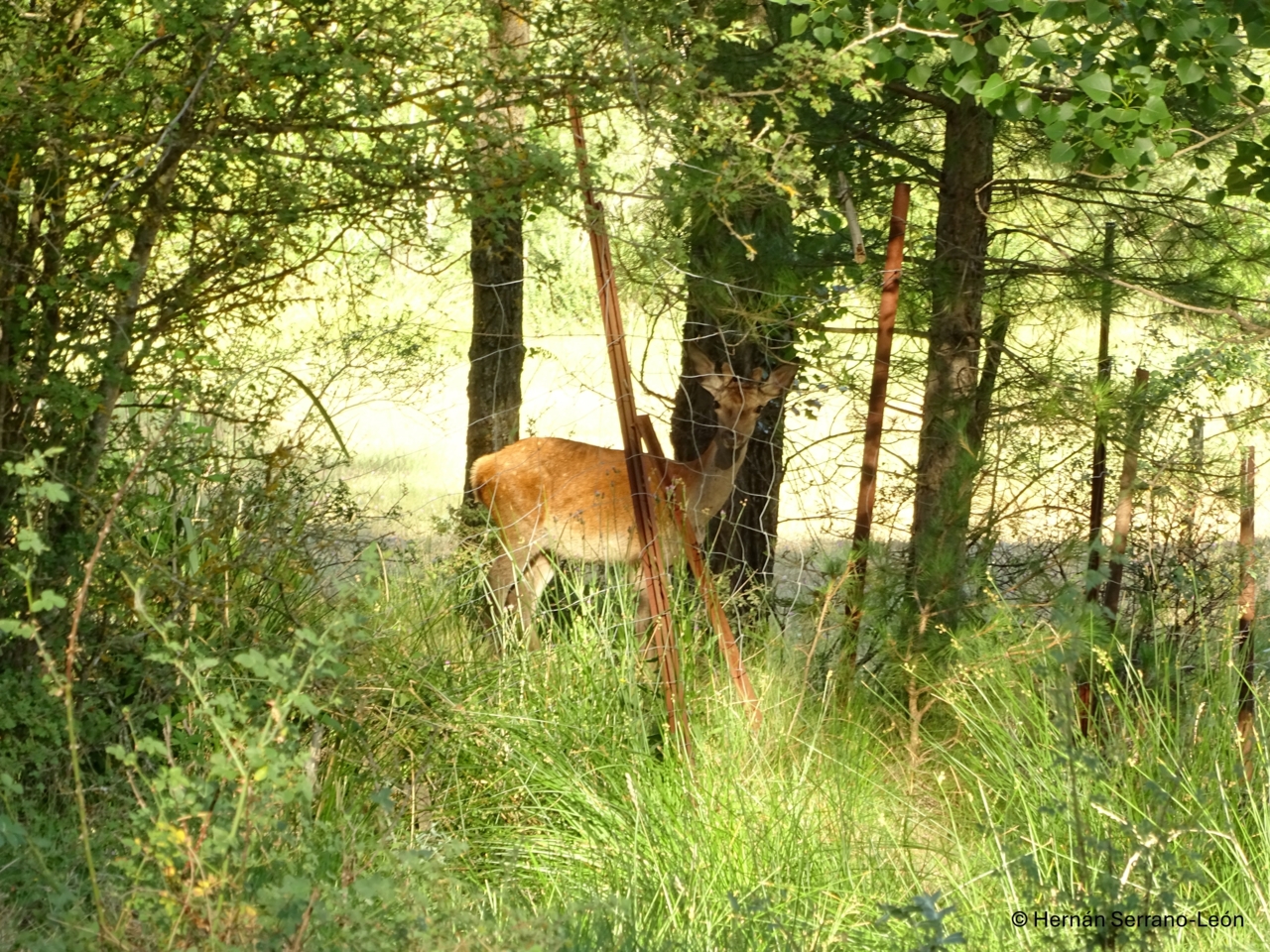Best Practice Knowledge Base
7.9 Fencing

Red deer behind a forest fence. Cuenca, Spain © Hernán Serrano-León
Fencing involves erecting physical barriers to protect areas from herbivory by wildlife, such as deer, and to prevent livestock intrusion. By excluding these animals, fencing facilitates the establishment and growth of young trees and understory vegetation, protecting natural forest regeneration. It can also be used to protect vulnerable plant populations from herbivory or trampling. The decision to implement fencing should be made early in the restoration process to ensure the protection of new growth. However, the high costs associated with installation and maintenance can limit the practicality of fencing, especially in big areas, leading to the exploration of alternative methods. Additionally, fencing may not be feasible in all situations due to landscape and connectivity considerations, among others.
I. Scientific articles
| Nº | Title | Author | Year | Focus region | Language | Type | Summary | Link |
| 1 | Deer herbivory affects the functional diversity of forest floor plants via changes in competition-mediated assembly rules | Nishizawa et al. | 2016 | Japan | English | Experiment | Experiment comparing deer herbivory effects on fenced and control plots | https://doi.org/10.1007/s11284-016-1367-6 |
| 2 | The Expanding Thread of Ungulate Browsing—A Review of Forest Ecosystem Effects and Management Approaches in Europe | Hardalau et al. | 2024 | Europe | English | Systematic review | Review on the effects of ungulate hervibory and different regulation methods in Europe | https://doi.org/10.3390/f15081311 |
| 3 | Restoring mixed forests through conversion of Norway spruce stands: effects of fencing and mechanical site preparation on performance of planted beech and natural tree regeneration | Löf et al. | 2023 | Sweden | English | Experiment | Experiment of the effect of different treatments, including fencing, on natural regenetation and planted beech | https://doi.org/10.1007/s10342-023-01554-z |
| 4 | Impact of Fencing on the Recovery of the Ground Flora on Heavily Eroded Slopes of a Deciduous Forest | Godefroid et al. | 2003 | Belgium | English | Experiment | Fencing impact on the early stages of recovery of forest flora on eroded slopes impacted by recreation activities | https://doi.org/10.1007/s00267-002-2705-8 |
| 5 | Experimental assessment of initial revegetation on abandoned paths in temperate deciduous forest | Roovers et al. | 2005 | Belgium | English | Experiment | Experiment on the effect of soil treatments, trampling exclusion and seed use on vegetation restoration on forest paths | https://doi.org/10.1111/j.1654-109X.2005.tb00639.x |
| 6 | Shrubs protect oak seedlings against ungulate browsing in temperate broadleaved forests of conservation interest: A field experiment | Jensen et al. | 2012 | Sweden | English | Experiment | Experiment on the protection of oak seedlings from browsing by shrubs and fencing | https://doi.org/10.1016/j.foreco.2011.11.022 |
| 7 | The influence of fencing on seedling establishment during reforestation of oak stands: a comparison of artificial and natural regeneration techniques including costs | Löf et al. | 2021 | Sweden | English | Experiment | Influence of fencing on seedling establishment during reforestation of oak stands, comparing artificial and natural regeneration techniques | https://doi.org/10.1007/s10342-021-01369-w |
| 8 | Fences can support restoration in human-dominated ecosystems when rewilding with large predators | Bull et al. | 2018 | Scotland | English | Modelling approach | Simulating the effect of top-down regulation by wolves on deer, and the use of fences to modify this effect | https://doi.org/10.1111/rec.12830 |
| 9 | Fence Ecology: Frameworks for Understanding the Ecological Effects of Fences | McInturff et al. | 2020 | World, United States | English | Narrative review | Review on the ecological effects of fences | https://doi.org/10.1093/biosci/biaa103 |

